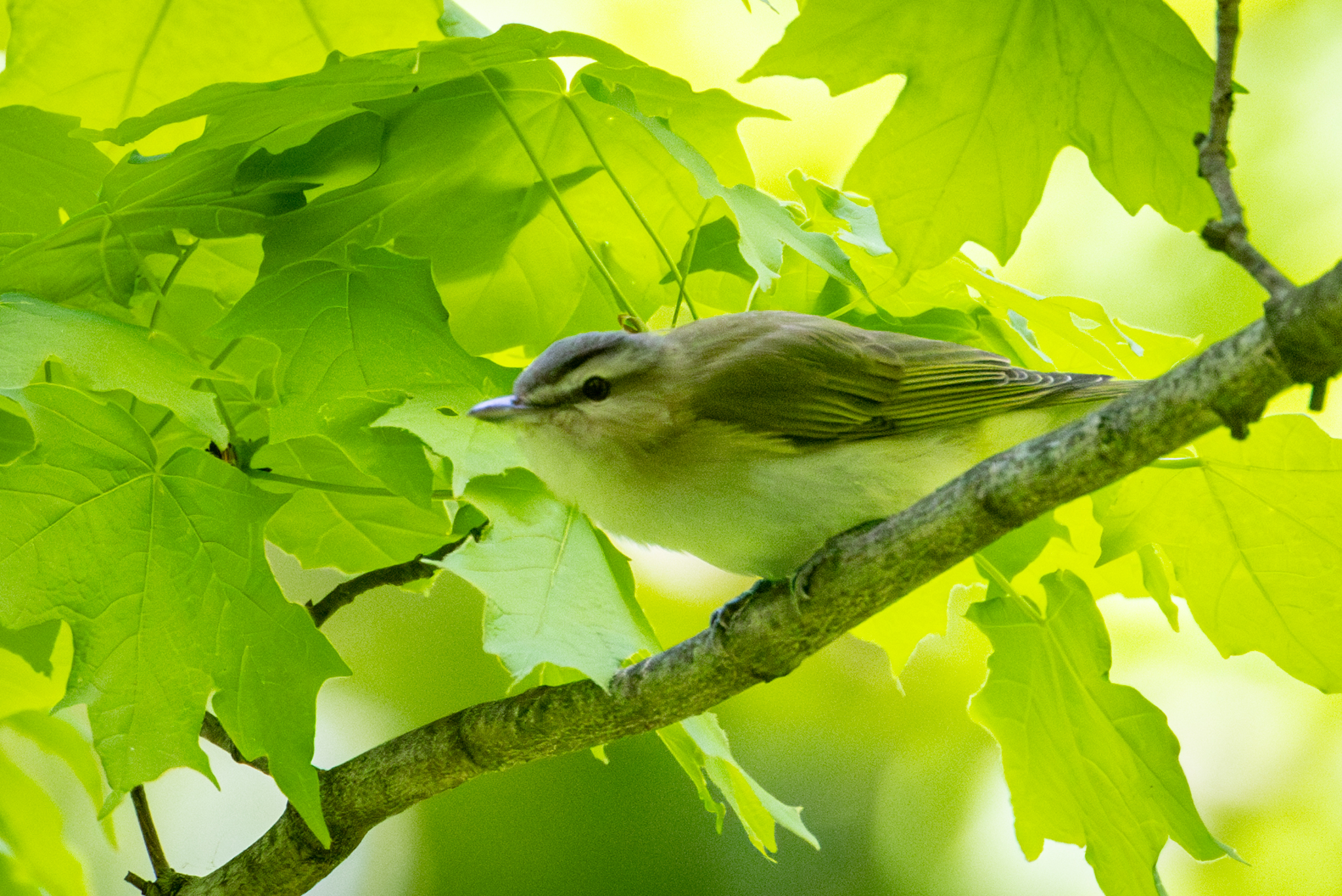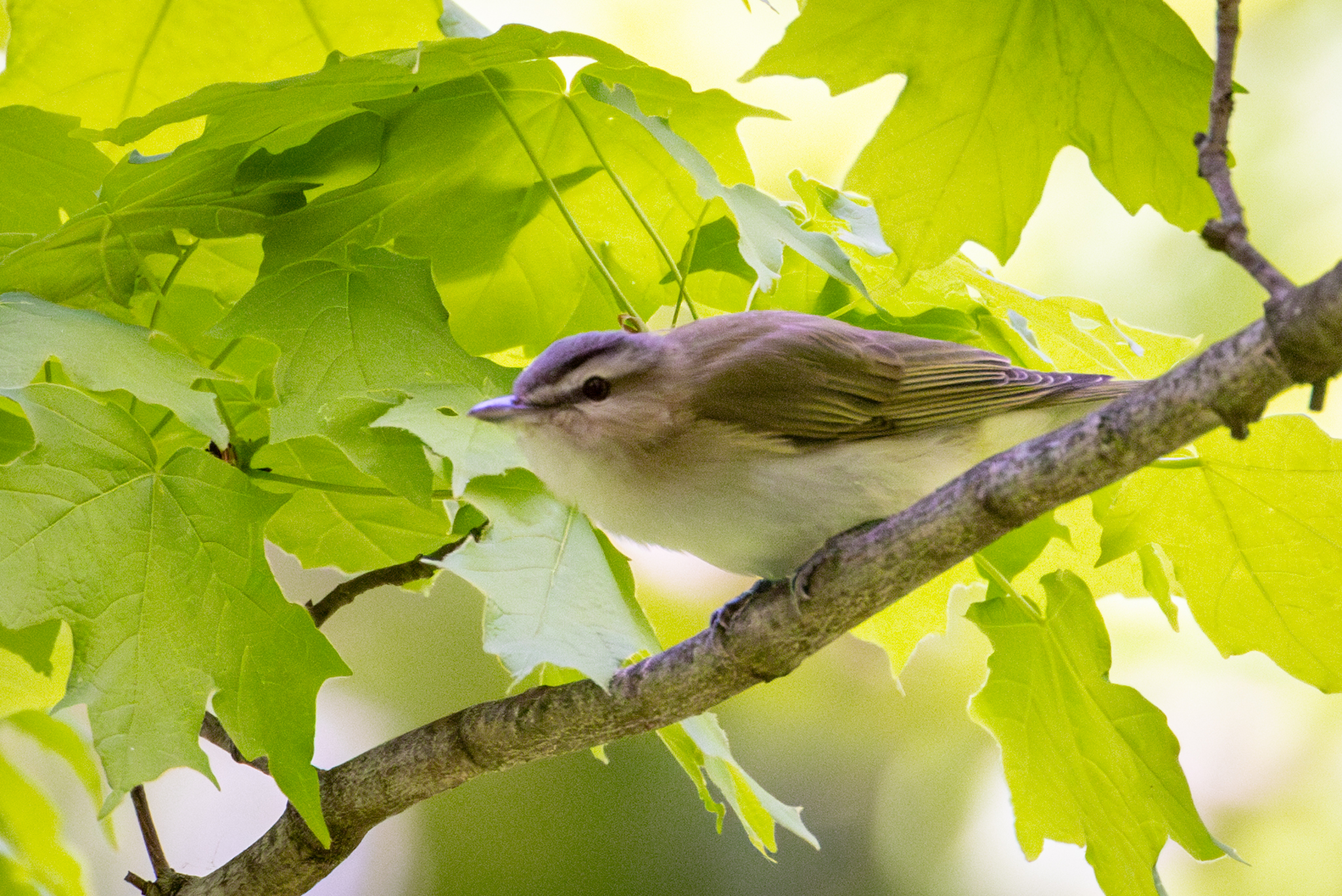A couple of days ago Karen and I were birding in a local forest preserve looking for a Hooded Warbler (we never saw it, but heard it quite close to us). During the search we saw some other good birds but I was struck by the constant noise from the Red-eyed Vireos. And I mean constant – they just never shut up, making it difficult to hear other birds in the area. In spite of their song, because they like being up in the canopy they are hard to spot (I have particular difficulty with this because I am deaf in one ear so I do not have the ability to locate where sound is coming from, i.e. no sound localization).
Just as we were preparing to leave I spotted a Red-eyed Vireo up in the leaves singing away and I wanted to get a shot of one since we had heard them all morning. Here’s the shot I took:
I know it’s not a great shot, but I want to use it for this demonstration. As you look at the bird above do you notice it has a green tinge to it? Because the bright sun was shining through the leaves in the canopy the bird has a green cast to it. Now look at the next version of the same image.
Can you see the difference in the bird’s coloration? It now has a “natural” brown tinge to it. I accomplished this by adjusting the Tint slider in Lightroom toward the Red end; the first picture’s default Tint was 34 but I manually adjusted it to 90 in the second picture.
So which is the more “natural” picture of the bird? The first picture is how I saw the bird in the forest and the second picture is how I wanted the bird to look like. Should I keep the first one or the second one? And why? Members can reply to the email or write it in the Comments section of the post. I look forward to hearing your thoughts.
If you enjoy seeing beautiful pictures of birds from around the world and reading about them Click Here to sign up for our mailing list. Members can post their own GreatBirdPics and learn more about bird photography techniques.


I like the first one. Perhaps it’s a defense mechanism.